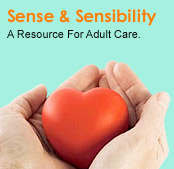|
There are different types of urinary incontinence:
Stress incontinence is common in women who have weakened pelvic floor muscles due to childbirth. The urine leaks because of sudden pressure is exerted on the lower stomach muscles due to a cough, laughing, lifting something or exercise.
Urge incontinence happens suddenly, and urination may occur in a few seconds, before you can get to the toilet. The elderly are most prone to this. It could also be due to an overactive bladder or a urinary tract infection.
Overflow incontinence is when small amounts of urine are incontrollably leaked out. It could be caused by an overfilled bladder. Men with an enlarged prostate may feel they cannot stop their bladders from constantly dribbling, and feel they can’t empty the bladder completely. Diabetes or certain drugs you are taking may also cause this.
Functional incontinence is when you have normal urine control but have trouble getting to the bathroom in time. This commonly occurs in the elderly with mobility problems, or because of illness.
Incontinence can be treated. Do not get embarrassed by it. It is more common than you think. It may be part of aging which can reduce how much urine your bladder can hold, but it can be controlled.
It is best to get the problem medically checked out. If you put up silently with your incontinence problem, you may risk getting rashes, sores, skin infections and urinary tract infections.
If it is caused by a medical problem, and can be easily treated, then the problem will go away. If it is caused by weakened pelvic muscles after childbirth, you can do Kegel exercises and bladder training to alleviate the problem.
Kegel exercises help to strengthen the bladder muscles, and these have to be practised for three to six months before you see an improvement. Both men and women can do these exercises.
It involves trying to stop or slow urine flow by squeezing your bladder muscles. Hold the muscles and count to 10, relax for another count of 10. Repeat this 10 to 20 times, 3 times a day.
You can also train your bladder by lengthening the time between urges to go to the bathroom. Set intervals for urinating – every hour or two hours, whether you need to or not. Then gradually lengthen the time between when you urinate (for example, by 30 minutes) until you're urinating every 3 to 4 hours.
If you feel the urge to urinate before the set time, try breathing slowly and deeply till the urge goes away. Wait 5 minutes after this and go to the bathroom even if you don't feel the need to. Build up the wait to 10 minutes the next time. You may also do Kegel exercises to control the urge. Bladder training may take 3 to 12 weeks.
Menopausal women who have mild stress incontinence may be helped with an estrogen cream put in the vagina, or by prescription medicines, For men with prostate problems, drugs to shrink the prostate may help improve the flow of urine.
On the alternative medicine side, you may consider acupuncture, reflexology and naturopathic help to resolve the problem.
|




